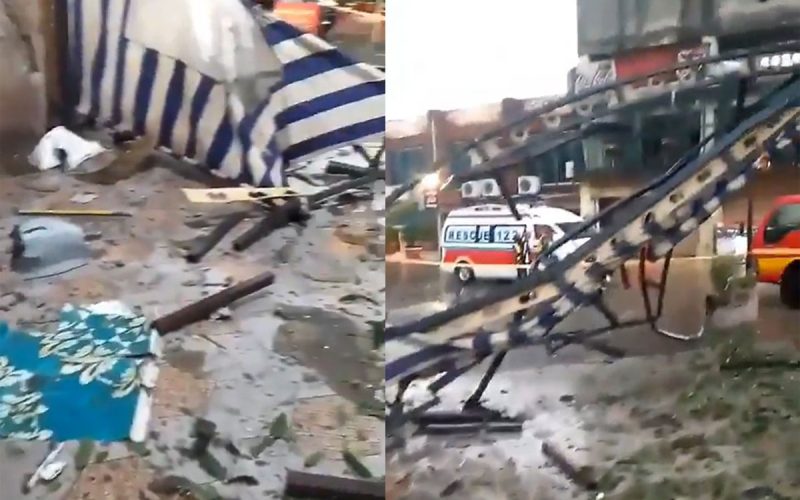Drone Attack in Rawalpindi’s Food Street
Rawalpindi’s famed food street near Liaqat Stadium, usually bustling with families and food lovers, turned into a scene of panic late last night as a suspected drone attack triggered a powerful blast. Eyewitnesses described a sudden, deafening explosion that shattered the calm, with smoke billowing over the area and emergency sirens piercing the night air.
Security forces quickly cordoned off the site, while rescue teams rushed the injured to nearby hospitals. The exact number of casualties remains unconfirmed as authorities continue to assess the situation.
Wider Wave, Blasts Rock Lahore and Karachi
The Rawalpindi incident was not isolated. Within hours, Lahore’s Walton Road and airport area were rocked by multiple explosions, with police confirming the downing of a large drone measuring nearly six feet. Panic gripped residents as windows rattled and plumes of smoke rose from the vicinity of the Naval College. Meanwhile, Karachi reported heightened security alerts, though no major blasts were confirmed by morning. The coordinated nature of these attacks has raised serious questions about the vulnerability of major Pakistani cities to aerial threats.
Security Response and Investigations
Law enforcement agencies, backed by the military, launched immediate search and rescue operations. In Lahore, police sources revealed that a drone was intercepted and neutralized using electronic jamming systems, preventing further devastation. Forensic teams are combing through debris in Rawalpindi, seeking clues about the drone’s origin and payload. Intelligence agencies suspect the use of commercially available drones modified for carrying explosives, a tactic increasingly seen in conflict zones.
Rising Tensions and Recent Strikes
These attacks come on the heels of escalating tensions between India and Pakistan. Just days earlier, India carried out “Operation Sindoor,” a joint military strike targeting terror hubs across Pakistan and Pakistan-occupied Kashmir. Key sites in Bahawalpur, Muridke, and Sialkot were reportedly hit, with the aim of crippling the operational capabilities of groups like Jaish-e-Mohammed and Lashkar-e-Taiba. Pakistani authorities have since been on high alert, anticipating retaliatory actions or further escalation.
Rawalpindi’s food street, a symbol of the city’s vibrant social life, now bears the scars of violence. Shopkeepers and residents voiced anger and fear, questioning the effectiveness of current air defense measures. Many have called for urgent upgrades to surveillance and anti-drone technology, especially around public gathering spots and critical infrastructure.
While officials have yet to confirm the perpetrators, the pattern points to a new era of asymmetric warfare, where drones bypass traditional defenses. The attacks have reignited debates about urban security and the preparedness of Pakistani cities to counter aerial threats. As investigations continue, the government faces mounting pressure to reassure the public and strengthen its defenses against future drone-based attacks.





